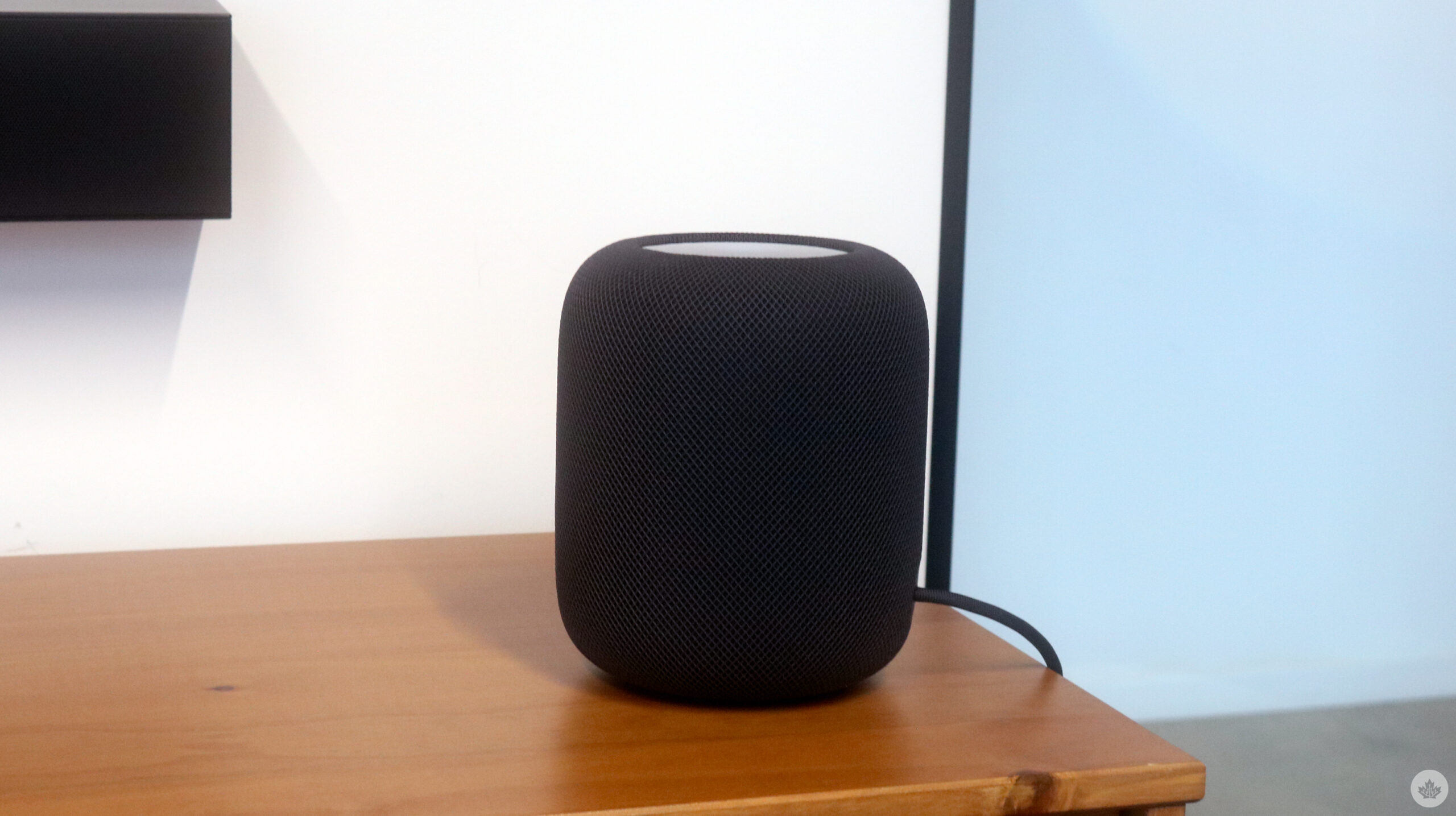
The Pros
- Stellar sound quality
- Connecting to Apple TV is great
- Matter support
The Cons
- Expensive
- Best work with Apple products
- Similar to 1st-Gen HomePod
I recently spent time with Apple’s latest and greatest smart speaker, the HomePod (2nd-Gen). Apple sent me two HomePods and an Apple TV 4K, allowing me to test the smart speaker’s surround sound and spatial audio while turning my living room into a better entertainment space. Before getting my hands on all this Apple tech, I only had my TV with a Panasonic sound bar we got from our neighbour, who was throwing it out. And for music, we used a Nest Audio connected to my Spotify account.
Switching to dual HomePods drastically improved the home entertainment experience in my living room, offering more depth to the music, movies and games we play in the entertainment space. I’ll get into it more later, but I’m sold on this new 2nd-Gen HomePod feature.
My roommates and I use the living room quite often. When we eat dinner together, host movie nights and play board games, we often boot up some tracks to amp up our competitiveness. With that out of the way, here are the various ways Apple’s 2nd-Gen HomePod has improved my living room listening experience and how the new speaker compares to competitors.
Play that track
Music on the HomePod (2nd-Gen) is clean and clearly separates songs’ bass and treble. And with the help of spatial audio on Apple Music, the HomePods transport you into a figurative studio, creating depth in certain tracks that you wouldn’t hear otherwise. For the below experience, I used Apple Music as Spotify lacks Spatial Audio.
“Unholy” by Sam Smith and Kim Petras offers a creepy experience with acoustics that sound like they’re coming from every angle as the soundwaves bounce off walls, encompassing me with several background harmonies. “Hotel California” (Live on MTV, 1994) by The Eagles brings the listener back to the early-mid 90s like we’re at a concert venue with deep bass and the prominent acoustics of the instruments. The sound of attendees’ voices and The Eagles themselves are also layered, creating an immersive sound stage.
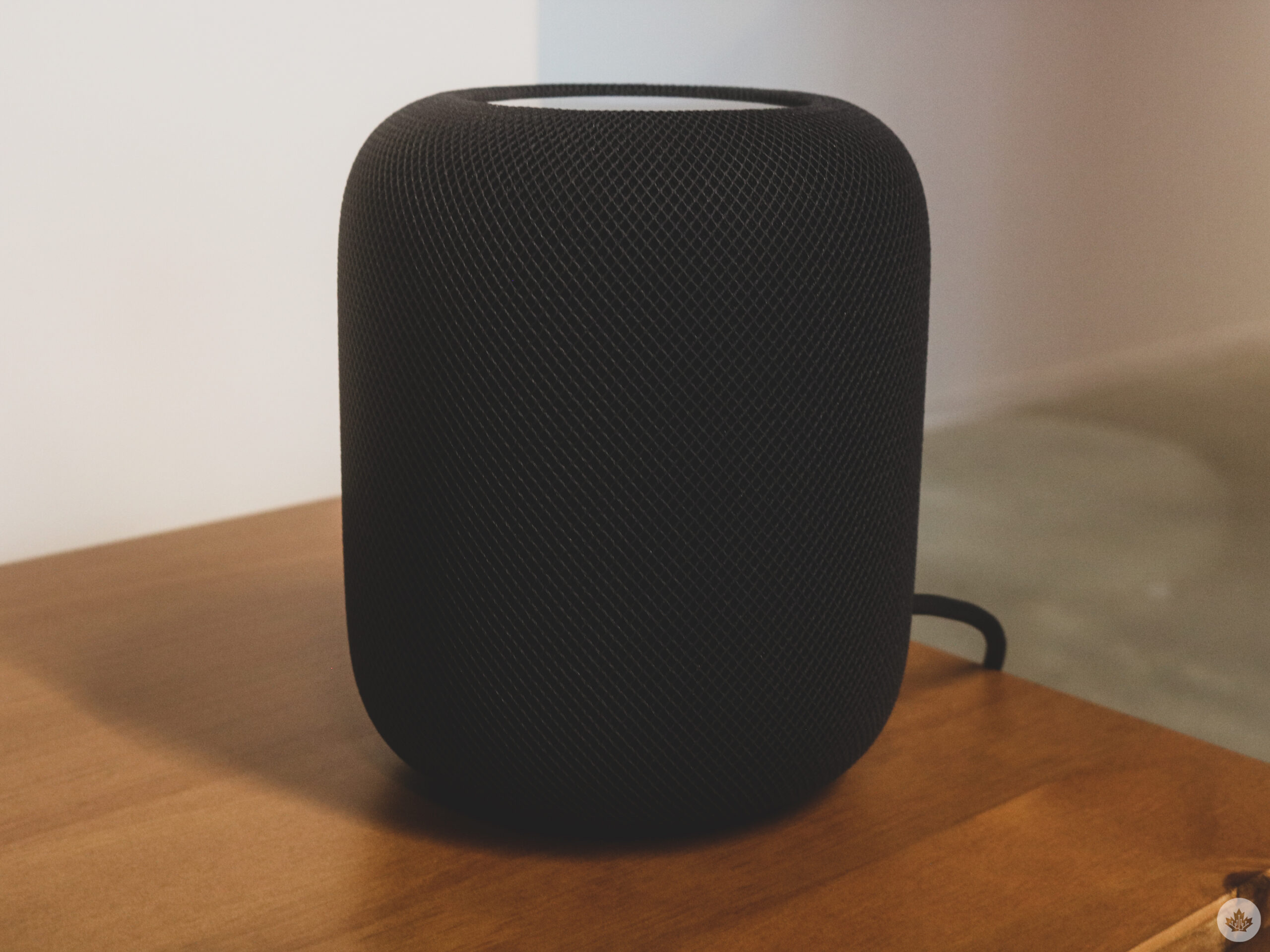
A fantastic song to test out spatial audio is also one of my favourite tracks for karaoke, “Bohemian Rhapsody” by Queen. It sounds decent at first, but after the “I see a little silhouette of a man” section of the song, the 2nd-Gen HomePod takes it to a whole other level, perfectly utilizing Dolby Atmos’ surround sound and spatial audio with harmonies and melodies to create an epic concert in the entertainment space. This was definitely my favourite song I tested out, and one I showed to several friends.
Of course, I also had to test out the hymns of my people and the songs of my past — dancehall and emo/punk music. Unfortunately, the dancehall songs didn’t use spatial audio, but the vocals were clean and crystal clear, and the bass was punchy. I’d personally like to have more bass when I’m listening to dancehall music, as I want it to feel like I’m destroying the speakers (like in my 2001 Mazda when I was 21). Switching over to my more punk/emo side, listening to “Stacy’s Mom” by Fountains of Wayne was probably the best music experience I’ve heard for this song in a home — and this was a go-to at house parties in my early ’20s. The vocals were pronounced and I felt like Adam Schlesinger was singing directly to me. There’s a soprano-like harmony in “Stacy’s Mom” that I don’t think I’ve ever heard before.
“To compare the HomePod (2nd-Gen) with the Nest Audio is like comparing a single apple to a grove of apple trees”
I also listened to songs like “I Write Sins Not Tragedies” by Panic! At the Disco (RIP), “1985” by Bowling for Soup, “Smooth Criminal” by Alien Ant Farm, “The Middle” by Jimmy Eat World, “Island in the Sun” by Weezer and “Welcome to the Black Parade” by My Chemical Romance. Again, the experience was great with these songs, with pronounced, clear vocals and phenomenal instrumentals. Not all of these songs offer Dolby Atmos, however.
Single experience
While Apple sent me two HomePod speakers to pair for stereo sound, this won’t be the experience for everyone. That said, I have one of the HomePod speakers up against a corner wall, and solo, it still produced a cage-like effect with sound waves, and while the sound experience isn’t as good as two speakers, it’s still enjoyable. I tested a few songs in the ‘Songs for Spatial Audio’ playlist on Apple Music, but the audio wasn’t as dynamic as it was with two speakers. The other speaker wasn’t near any walls, so it lacked the impact of the figurative sound cage, but the music was spread out evenly from every angle and still offered a decent listening experience.
To compare the HomePod (2nd-gen) with the Nest Audio is like comparing a single apple to a grove of apple trees. The Nest Audio provides a decent, loud listening experience, but its sound doesn’t feature the same level of detail that’s available from the HomePod (2nd-gen). While the speaker may actually be louder than the HomePod — I played the same song and went back and forth to test this out — the HomePod (2nd-Gen)’s acoustics and instrumentation are clearer and richer. Overall, the Nest Hub sounds hollow and lacks depth compared to the fullness of the HomePod. Of course, this makes sense, given Nest Audio is less than half the cost of Apple’s new smart speaker.
I found the HomePod mini’s sound experience comparable to the Nest Audio. I’ve spent weeks listening to Apple’s smaller smart speaker and never thought, “this is something I need to buy for myself.” I don’t have much experience listening to the 1st-generation HomePod, but based on my limited time with Apple’s original smart speaker, the 2nd-Gen HomePod sounds very similar to its predecessor. However, the new HomePod features spatial audio alongside the same room-sensing as its predecessor, resulting in more immersive audio.
Entertainment room
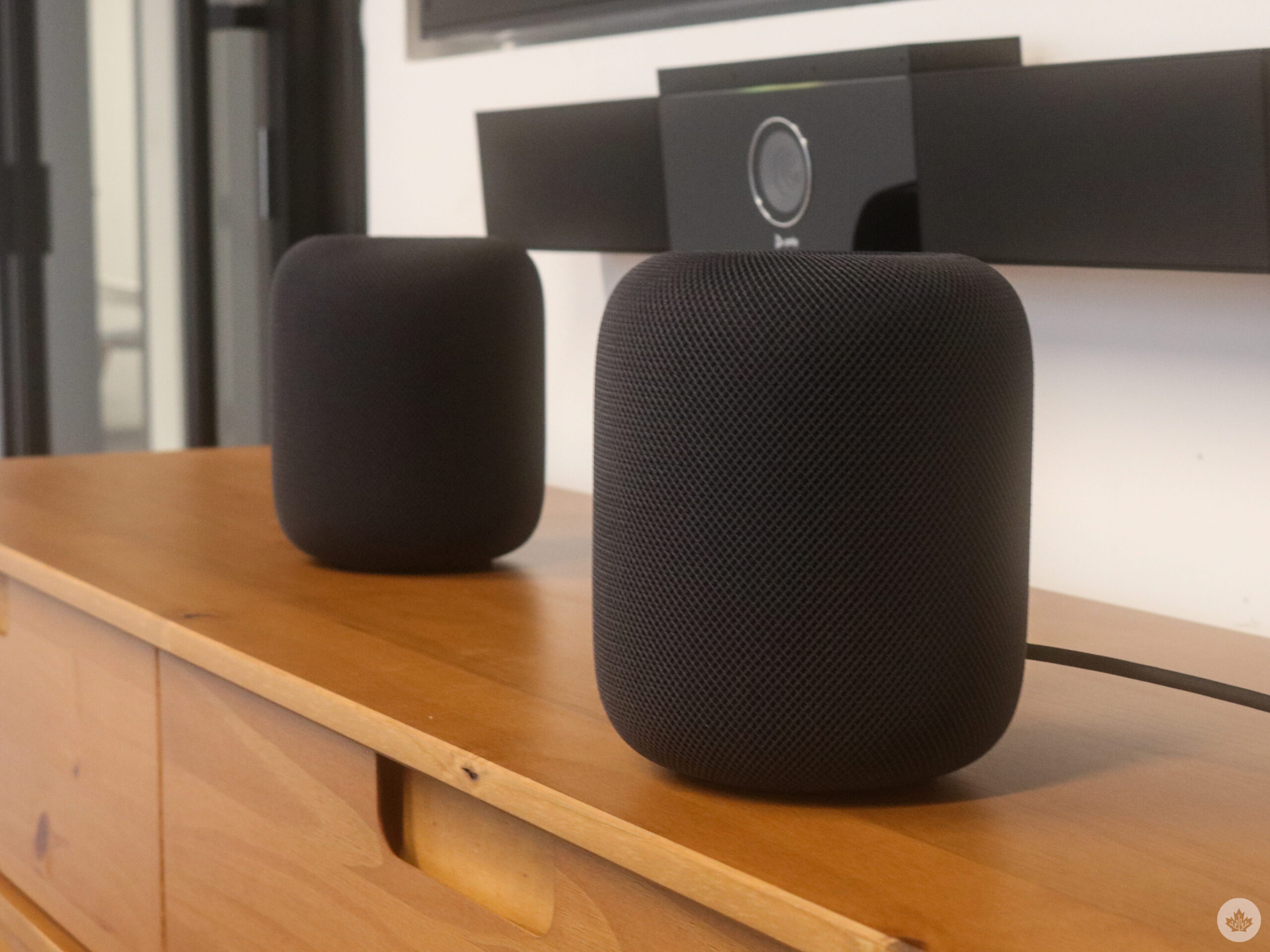
When I learned about the HomePod (2nd-Gen), one of the key new features I was interested in checking out was the Apple TV 4K connectivity. I love a good movie night with my roommates, so I tested several different movies and TV series on services like Crave, Apple TV+, Disney+ and Netflix, which all provide some surround sound experience with specific titles. Thankfully, connecting the HomePods to the Apple TV 4K was easy through Apple’s Home app.
First, I watched the second episode of The Last of Us (spoilers ahead, skip to the next paragraph to avoid them), but in this episode, Joel, Ellie and Tess traverse abandoned Boston to meet with a group of Fireflies. On the way to meeting with the rebels, the group encounters a type of infected called ‘Clickers’ for the sounds they make to echolocate prey. The clicking sound they make was chilling with spatial audio, and hearing it so distinctly made the creature seem much more daunting.
The “Jungles” episode of Our Planet was also a fun watch; the birds chirping and the cicadas singing in the background sounded distant but detailed, offering a layer of immersion that I never thought I needed but now don’t want to live without. Dune also featured interesting sound effects when characters used the ‘Voice.’ Encanto‘s melody and harmonies were enchanting, and “We Don’t Talk About Bruno” sounds more impactful and ominous when the acoustics come at you from different angles.
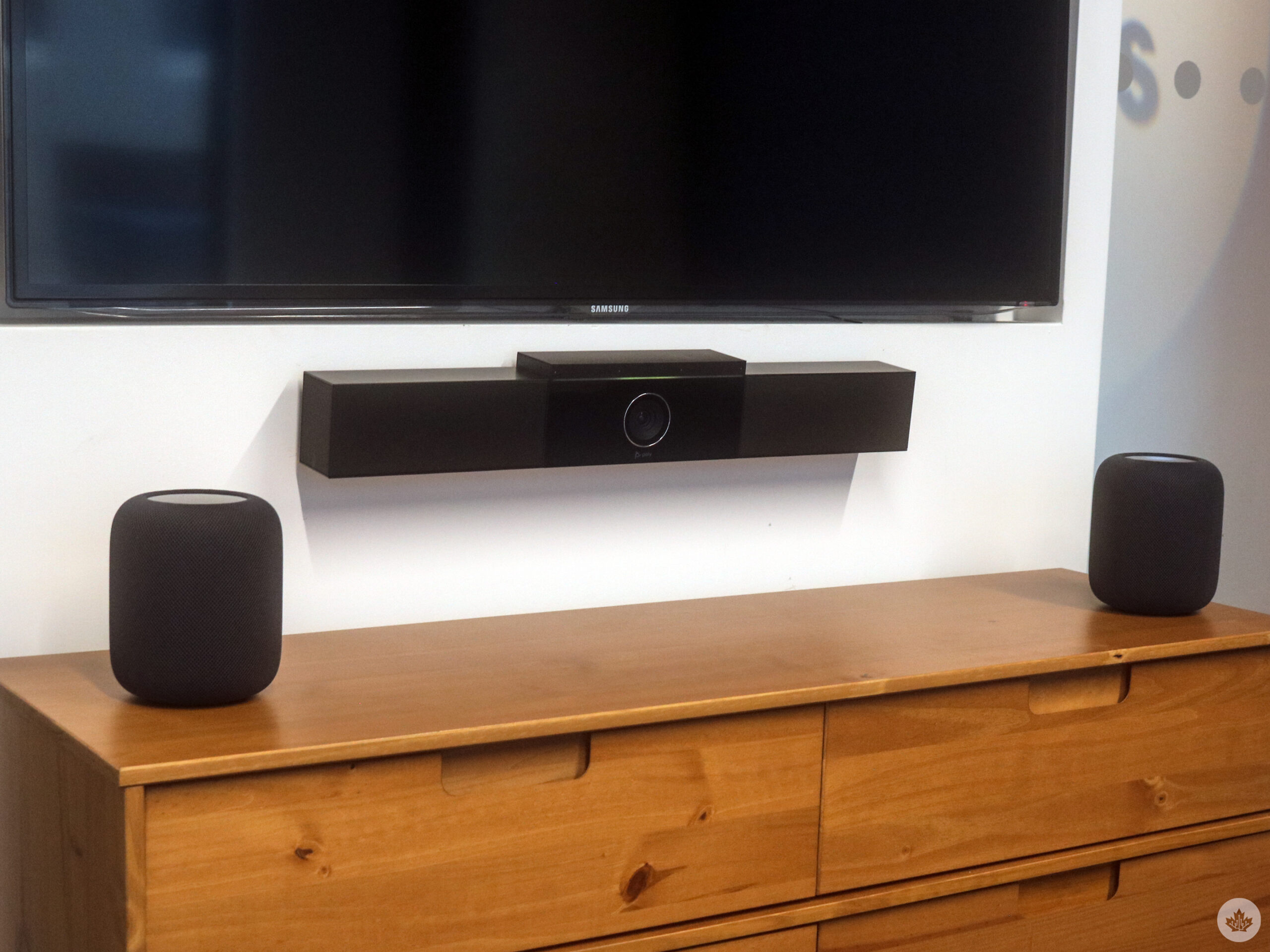
Lastly, I watched Spider-Man: Into the Spider-Verse, which, alongside its popping colours and visuals, offered an impressive audio experience with background music that popped but was still unintrusive.
Part of the entertainment in your room involves video games, and I tried out Dead Cells and Samurai Jack on Apple Arcade. Both provided an excellent sound stage. I typically play games on my PS5 (which you can use with the HomePod), and I use my Pulse 3D wireless headset, which provides surround sound. When playing these two Apple Arcade games, it felt like I was using my headset again. Dead Cells’ adaptive music sets the tone for the gruelling rogue-like adventure, whereas the voice acting and machine-destroying sound effects in the Samurai Jack game amplify the experience.
How the HomePod does it
The smart speaker features a seamless, acoustically transparent mesh fabric with a backlit touch surface that brightens around the edges. It also offers a custom-engineered high-excursion, built-in bass EQ mic, and beamforming array of five tweeters around the base that work together for a better acoustic experience.
These tweeters send vocals toward the user with instrumentation going in other directions to bounce off walls, which was what I experienced when listening to “Stacy’s Mom” as I felt the vocals in the core of my soul. The HomePod can do this thanks to its S7 chip combined with software and system-sensing tech that offers computational audio. The speaker senses the room with sound (echolocation) to detect whether it’s positioned beside a wall or freestanding and adapts in real time. Apple’s 1st-Gen HomePod also included similar functionality.
The Siri of it all

Apple’s speakers work alongside its smart digital assistant Siri, which allows users to say “Hey Siri” to activate it. With it, you can tell it to play Game of Thrones on Crave or play “Circles” by Post Malone on Apple Music without any issues. Sometimes if you don’t say which app you want, though, the assistant won’t be able to follow through with the command. Just saying, “Hey Siri, play Into the Spider-Verse,” will bring up the film on Apple TV to rent, but not Netflix, where you can stream it with a subscription.
“The new HomePod also offers Matter support, which enables home products to work across ecosystems while also maintaining the highest level of security.”
You can also activate ‘Find My’ on the HomePod, allowing you to ask the smart speaker to find the location of your phone. Another cool feature is Sound Recognition, which listens for smoke and carbon monoxide alarms and sends a notification directly to the user’s iPhone. Thankfully, I didn’t have to use it during my testing. The built-in temperature and humidity sensor can measure indoor environments, so a user can create automation that closes the blinds or automatically turns on the fan when a specific room temperature is reached. I don’t have any smart home technology that can take advantage of this feature, but it’s cool to have the option. And now, my Home app tells me the temperature inside my home, which is an added bonus.
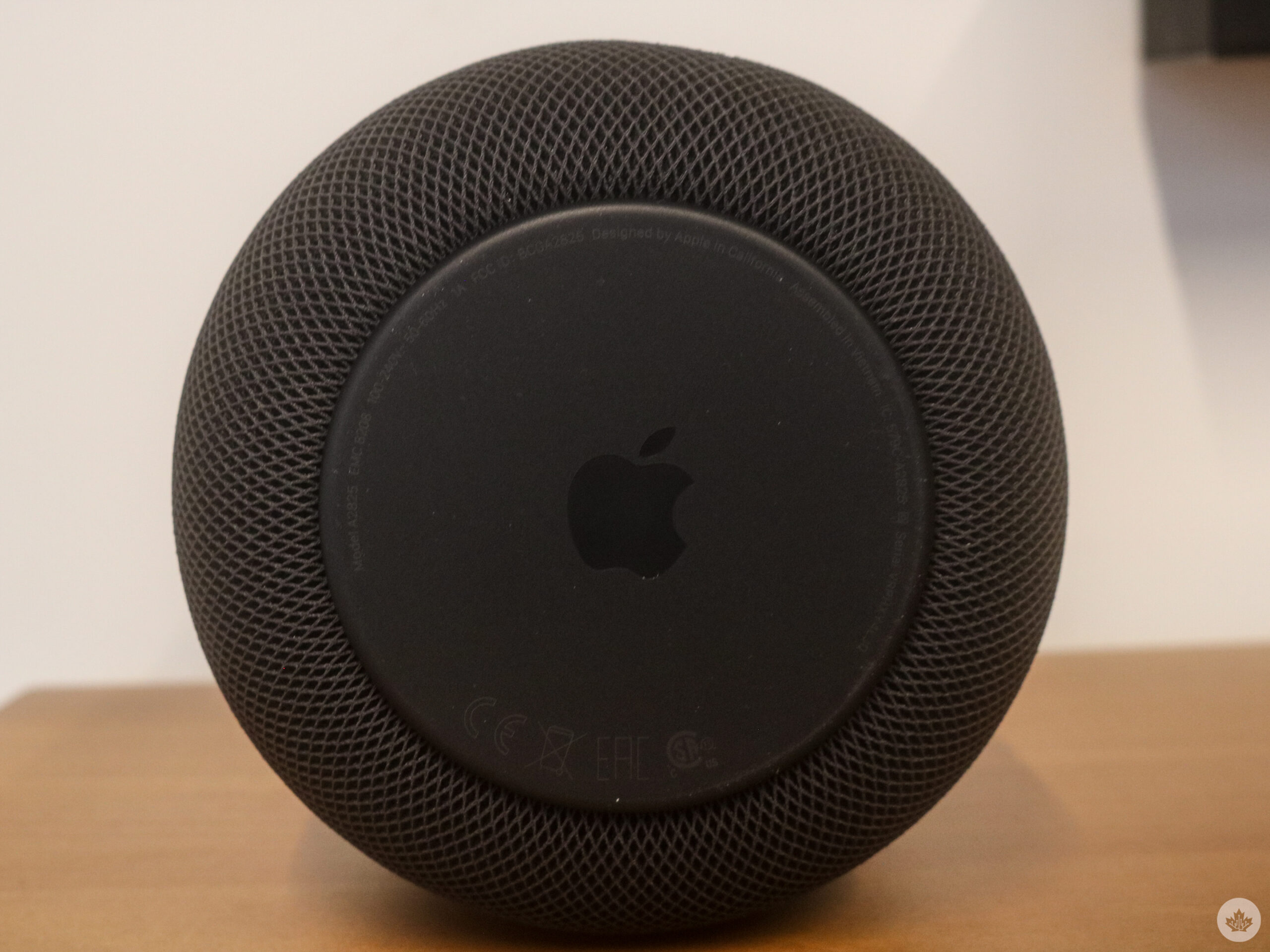
The new HomePod also offers Matter support, enabling home products to work across ecosystems while maintaining the highest level of security. Apple gave me a smart plug to try this out as well. Given that Matter technology is becoming increasingly popular, it’s great that the HomePod includes this functionality.
The smart speaker uses your home’s Wi-Fi, so you’ll need a good connection for the 2nd-Gen HomePod to work reliably. While the experience was great most of the time when my roommate hopped on Overwatch, and the other started playing World of Warcraft, the connection in my living room suffered. I noticed that when this happens, the HomePod has a more difficult time working alongside the Apple TV 4K. Playing music isn’t an issue, but using the speakers as my sound system seems to falter as only one (or neither) of them would connect to the Apple TV 4K. Of course, not everyone will have this experience, and it’s no fault of Apple as I need better Wi-Fi coverage in my home, but it’s something to consider.
My new Apple Home experience
Apple’s HomePod (2nd-Gen) is overall pretty stellar. I enjoyed how it transformed my living room into a better entertainment space, amplifying my music-listening and TV experience. My roommates both loved the speakers and are pretty happy with the upgrade in the house as well. One of them even said, “hearing Dune even felt cleaner and crisper than when I saw it in IMAX," which is pretty high praise.
The HomePod 2nd-Gen costs $399 , and to get surround sound, you’ll need two of the same HomePods, a $798 proposition. But surround sound systems range in pricing and can reach several thousands of dollars in some cases, so if this is something you’re looking for in your home, Apple’s new HomePod could fulfill the dual purpose of being a smart speaker and a sound bar for your Apple TV. If you live in Apple's ecosystem, the HomePod remains the best smart speaker for you.
MobileSyrup utilizes affiliate partnerships. These partnerships do not influence our editorial content, though we may earn a commission on purchases made via these links that helps fund the journalism provided free on our website.
"Apple’s HomePod (2nd-Gen) is overall pretty stellar"
MobileSyrup may earn a commission from purchases made via our links, which helps fund the journalism we provide free on our website. These links do not influence our editorial content. Support us here.


